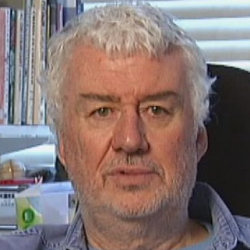AUKUS and the rupture in Australian civil-military relations
April 17, 2023
When a senior officer in the Australian Defence Force assumes political positions that are in the realm of the overtly political, and is not disciplined for having done so, the government is derelict in its duty to maintain the firewall between the civil and the military. Worse, it constitutes an offence against democratic theory and practice.
Consider the latest incursion. In a recent interview with Matthew Knott and published as the lead story on page one of the Sydney Morning Herald the Chief of Navy, Vice-Admiral Mark Hammond, delivered himself of views that begin with statements of fact but then veer into waters he should have stayed clear of.
First, in fairness and honesty, two concessions. Vice-Admiral Mark Hammond clearly has an encyclopaedic knowledge about submarines. He is also correct that the undersea communication cables coming into Australia need protection, as do the SLOCS in which Australias trade is transported.
Beyond these two concessions there are six elements in the interview which are troubling and suggestive of attitudes which undermine public confidence in the AUKUS project in general and the decision to acquire nuclear-propelled submarines (SSNs) in particular, as follows.
First. The burden of Vice-Admiral Hammonds responses to Matthew Knott is that the public should ignore the hand-wringing of the AUKUS doubters. This is a view that might better be expressed as an aside at Senate Estimates - or even not expressed at all: it not only mischaracterises the well-founded reservations of those who remain unconvinced of the wisdom of AUKUS, but it also enters the political realm of policy and strategy justification.
So, too, does his claim that the SSN project which he portrays as an endeavour on par with the Snowy Mountains Hydro Electric scheme as a nation-building enterprise. This is confused thinking. Leaving aside the question whether the Snowy Mountains scheme was a nation-building scheme, its objective was to create the conditions for economic development and prosperity.
AUKUS, conversely, is a massive weapons building undertaking by the state-military-industrial-university complex more akin to the Manhattan Project and we know what that led to.
And for the nation-building through SSN construction claim to be at all credible, there would need to be a body of evidence drawn from the experience of the US, the UK, and France in support of it. But there isnt.
Second. The SSNs, we are told, will protect the undersea cables: given the likely number that will be on station, and the number and length of the cables, that might better be expressed as only some of the time, and only in some places.
Third. The dismissal of the SSNs potential to drag Australia into a US-fomented war with China is unworthy of Australias senior naval officer. It amounts to a dismissal of concerns which very experienced former diplomats, politicians, and other analysts have made on the basis of logical argument and empirically informed history.
Fourth. Similarly, the dismissal of the SSNs becoming increasingly vulnerable as the result of revolutions in anti-submarine warfare and undersea warfare (ASW/USW) technology tends towards over confidence.
Certainly, given Vice-Admiral Hammonds experience and position, it must be assumed he knows of what he speaks; and it should also be borne in mind that many heralded breakthroughs in weaponry suffer from excessive prescience.
On the other hand, and in the public realm, there are numerous contributions by highly capable researchers, who are technologically literate, well-read in the scientific journals which publish articles in the areas of ASW/USW and what is more, understand the trajectories of development. As well, it is informative to canvass the US Navys own publications for references to increased vulnerability and they are numerous.
Question: how can this excessive confidence in the future SSNs be reconciled with a body of scientific knowledge which undermines it?
Minimally, what the journals, and reports on ASW/USW improvements imply is a future that punctures the confidence of Vice-Admiral Hammond. An easily accessible publication (by Professor Roger Bradbury), part of the ANUs National Security College collection on submarines, is worth a look. So, too, are some of the publications by the Nautilus Institute in Melbourne.
As for the USN, one of its core justifications for developing fleets of unmanned underwater vehicles (UUVs) is the threat posed by detection technologies - the logic being that they are cheaper and, therefore, more expendable in the context of high-risk operations.
Fifth. Vice-Admiral Hammonds proposition that the rush to acquire submarines by other navies is a defining counter-argument to the claimed increasing vulnerability of submarines is alike in its weakness. Many of those other navies are using them for purposes quite different to those of Australia.
More importantly, it should be noted that military forces are notorious for maintaining and building obsolescent weapons platforms and there is abundant historical and contemporary evidence of this beyond SSNs.
In just the maritime domain, for example, the prevailing analyses share the conclusion that, in any peer-to-peer conflict, aircraft carriers and all other surface combatants will be rendered useless very early on. They are, quite simply, slow moving targets and subject to the lethal processes of new sensor-kill chains but that is not stopping their construction, even by China.
Admittedly, they are useful and effective for intimidating and destroying significantly inferior military powers and pirates, but these are reasons that do not justify their baroque adornments and exorbitant costs. and, sooner or later, they will fail robust budgetary and strategic examinations.
The lesson is that providing the rationale for the SSNs by appealing to the putative wisdom of others who think alike is little more than an exercise in discounted reasoning.
Sixth. Finally, given the egregious nature of the SMHs Red Alert series, and Matthew Knotts central role in producing them, why has the Chief of Navy made such an injudicious decision to be associated with such a publication? Should he not be more circumspect when granting interviews and should they not be with a wider range of interrogators? Then theres the SMH indulging its China threat fantasies: incurably recidivist, like a dog returning to its vomit.
A version of this article was submitted to the Sydney Morning Herald. It has not to date been published.

